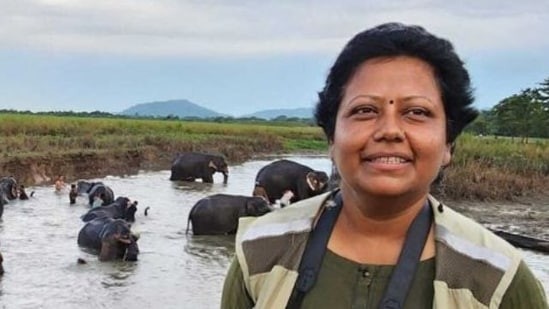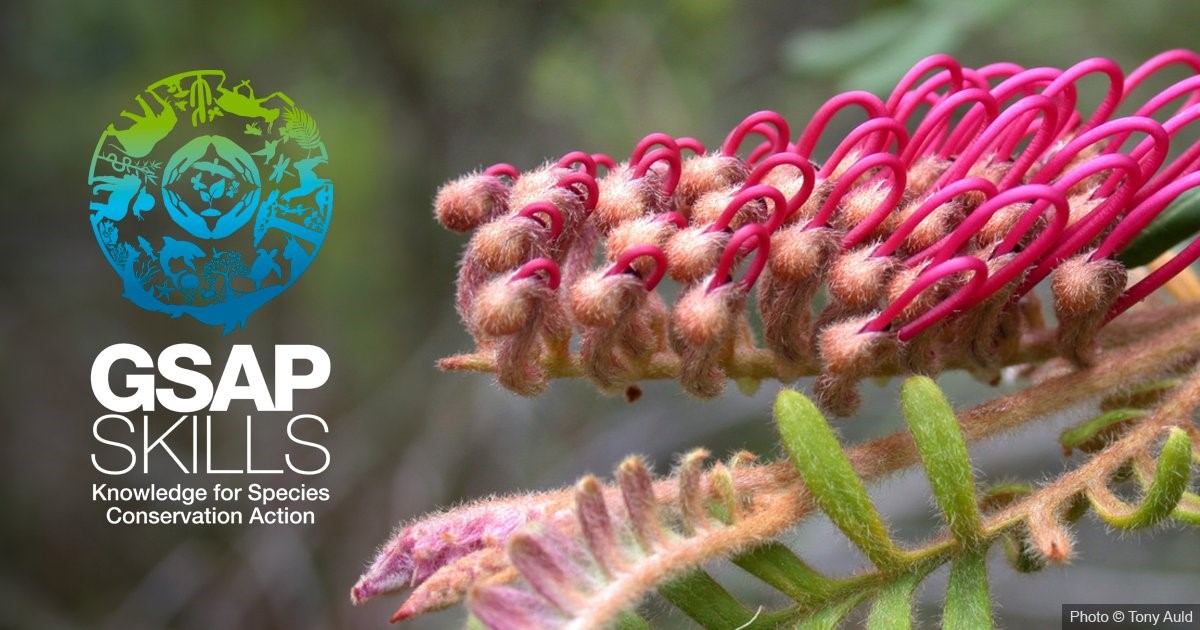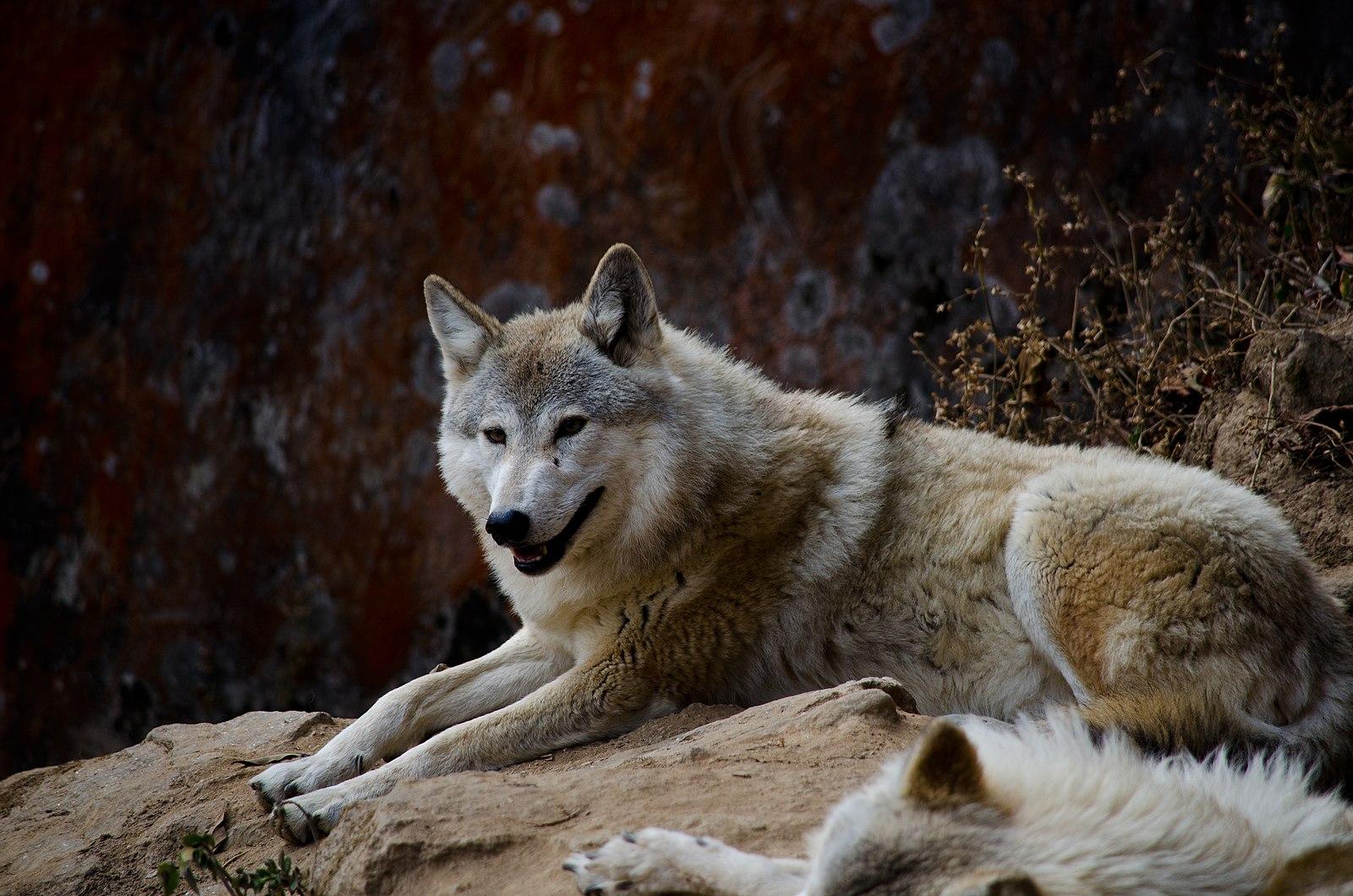IUCN Kenton Miller Award 2025

- 14 Oct 2025
In News:
India has achieved a landmark moment in global conservation as Dr. Sonali Ghosh, Field Director of Kaziranga National Park and Tiger Reserve (Assam), became the first Indian to receive the prestigious IUCN WCPA Kenton Miller Award 2025. The honour was announced at the IUCN World Conservation Congress in Abu Dhabi, highlighting India’s rising leadership in biodiversity governance and protected-area innovation.
About the IUCN Kenton Miller Award
- Instituted: 1999
- Presented by:IUCN World Commission on Protected Areas (WCPA)
- Named after: Dr. Kenton R. Miller, eminent conservationist & former IUCN Director-General
- Purpose:Recognisesoutstanding innovation and excellence in the sustainability and governance of protected areas
- Eligibility: Protected-area managers, researchers, community/indigenous conservation practitioners
- Award Components:
- USD 5,000 grant
- Global citation
- Sponsored participation at the IUCN Congress
Significance of Dr. Ghosh’s Contribution
Dr. Ghosh has been awarded for pioneering inclusive and sustainable protected-area management across the Kaziranga-Orang-Manas landscape. Key initiatives include:
- Community-centric conservation: Empowering local and indigenous communities as co-stewards
- Eco-tourism models: Ensuring livelihood security while safeguarding biodiversity
- Anti-poaching and habitat security: Strengthening surveillance and ecological connectivity
- Gender inclusion: Promoting women’s participation in frontline conservation forces
Her leadership reflects India’s approach to biodiversity protection through grassroots participation, science-based governance, and livelihood integration.
Broader Context: India at the IUCN Congress
At the Congress, India reiterated its commitment to global environmental cooperation. Union Minister Kirti Vardhan Singh engaged with international delegates and IUCN leadership on advancing shared conservation goals, reinforcing India's stance as a proactive global environmental actor.
About IUCN and the World Conservation Congress
- Founded: 1948
- HQ: Switzerland
- Global network of governments, NGOs, and experts from 160+ countries
- World Conservation Congress: Held every four years to set global biodiversity priorities
Previous Winner (2023)
- Maria del Carmen Garcia Rivas (Mexico) – Honoured for community-led management of marine protected areas.
IUCN World Heritage Outlook 2025
- 14 Oct 2025
In News:
- The IUCN World Heritage Outlook 4, to be launched at the IUCN World Conservation Congress 2025 in Abu Dhabi, represents the world’s most comprehensive periodic evaluation of the conservation status of UNESCO natural and mixed World Heritage Sites.
- Conducted every 3–5 years by the International Union for Conservation of Nature (IUCN) and the World Commission on Protected Areas (WCPA), it provides an independent, transparent assessment of protection efforts, threats, and future prospects for these globally significant ecosystems.
Purpose and Significance
The Outlook functions as a global conservation barometer designed to:
- Monitor the state of conservation of natural World Heritage Sites
- Highlight exemplary site management and transfer of best practices
- Provide early warnings for ecological degradation and governance failures
- Bridge data gaps through expert-led evaluation and advanced monitoring tools
- Showcase the societal and ecological benefits of natural heritage, including livelihoods, disaster resilience, and carbon storage
This mechanism complements UNESCO’s statutory monitoring under the 1972 World Heritage Convention, strengthening global efforts to realize the Kunming–Montreal Global Biodiversity Framework (KM-GBF) targets by 2030.
Global Conservation Outlook: Key Findings (2025)
- ~65% of sites show stable or improving health since 2020, reflecting enhanced governance and restoration actions. Example: Galápagos Islands, Yellowstone National Park
- Over 80% of sites face direct climate threats—coral bleaching, glacier retreat, wildfires. Example: Great Barrier Reef
- ≈60% experience pressures from invasive species, habitat loss, and unsustainable resource use
- Marine sites like Komodo National Park (Indonesia) and Aldabra Atoll (Seychelles) show progress through sustainable tourism and science-based management
- Technology integration (AI, satellite mapping, eDNA) is improving real-time monitoring. Example: AI-enabled wildlife tracking in Okavango Delta
- Around 15 sites have moved into the Danger List due to conflict, pollution, and climate impacts
- Natural World Heritage sites hold ~10% of global terrestrial carbon, underlining their climate role
Natural World Heritage: Global Profile (2024)
- 271 sites with natural Outstanding Universal Value
- 231 natural, 40 mixed
- 22% of all World Heritage properties (1,223 total)
- Over 470 million hectares protected across land and sea
- Represent ~8% of global protected area coverage
- Spread across 115 countries
- Africa: 47
- Asia-Pacific: 85
- Europe & North America: 83
- Latin America & Caribbean: 47
- Arab region: 9
- 18 transboundary sites; 15 in Danger List
India: Trends and Insights
India hosts 7 natural and mixed World Heritage Sites, spanning the Himalayas to coastal wetlands, constituting ~1.5% of global natural WH coverage.
Positive developments
- Kaziranga&Manas: Improved biodiversity and anti-poaching success through community stewardship and regulated ecotourism
Sites of concern
- Sundarbans: Declining mangroves due to salinity rise, cyclones, and sea-level change
- Western Ghats: Pressures from mining, infrastructure, and land-use conflicts
- Nanda Devi & Great Himalayan National Park: Glacial melt and invasive species affecting Himalayan watersheds
Policy support
- Wildlife (Protection) Amendment Act, 2022
- LiFE Mission for sustainable lifestyles aligned with KM-GBF
- Funding gaps: ~30–40% higher financial allocation needed, especially for marine and transboundary sites
Major Challenges
|
Challenge |
Impact |
|
Climate change |
Coral bleaching, glacial retreat, desertification |
|
Unsustainable development |
Habitat fragmentation, tourism pressure |
|
Funding shortfalls |
Inadequate staffing, weak surveillance |
|
Governance issues |
Overlapping mandates, weak enforcement |
|
Biodiversity data gaps |
Limits adaptive and real-time conservation |
Recommendations
- Climate-resilient planning: Integrate heritage into national climate strategies. Example: Aligning LiFE and National Adaptation Fund with site targets
- Green financing: Carbon credits, biodiversity funds, CSR, eco-investment
UNDP–GEF BIOFIN as model - Local and Indigenous partnership: Community co-management and benefit-sharing. Example: Eco-Development Committees in Manas and Periyar
- Tech-enabled conservation: AI surveillance, remote sensing, eDNA, drones. Example: IUCN Global Ecosystem Atlas initiative
- Transboundary cooperation: Joint research and ecological corridors. Example: India–Nepal Terai Arc Landscape
Indo-Burma Ramsar Regional Initiative (IBRRI)
- 03 Aug 2025
In News:
The 15th Conference of the Parties (COP15) to the Ramsar Convention concluded with a significant side event of the Indo-Burma Ramsar Regional Initiative (IBRRI), highlighting collaborative efforts for wetland conservation and restoration across Southeast Asia.
About IBRRI
- Origin: Jointly developed by the Ramsar National Focal Points of Cambodia, Lao PDR, Myanmar, Thailand, and Viet Nam, with technical support from the IUCN Asia Regional Office.
- Aim: To coordinate and support the implementation of the Strategic Plan of the Ramsar Convention, particularly in addressing wetland degradation.
- Support: Backed by IUCN’s BRIDGE (Building River Dialogue and Governance) project, which promotes sustainable water management, biodiversity conservation, and cross-border cooperation.
Governance Structure
To ensure oversight, transparency, and inclusivity, IBRRI has developed a multi-tiered governance framework:
- Steering Committee: Comprising Ramsar Administrative Authorities from the five member countries.
- Secretariat: Hosted by the IUCN Asia Regional Office, Bangkok.
- Stakeholder Committee: Provides technical and strategic guidance, ensuring multi-stakeholder participation including governments, NGOs, and civil society.
Strategic Plan 2025–2030
- Launch: Officially unveiled during COP15 as a transboundary framework for wetland management.
- Objective: To halt and reverse wetland loss across member states through restoration, sustainable use, and regional cooperation.
- Approach: Promotes knowledge exchange, policy coordination, and joint action for wetland conservation.
About BRIDGE Project
- Aim: To strengthen transboundary water governance by catalysingsustainable management of shared rivers, ensuring water security, conserving biodiversity, and fostering peaceful cooperation across borders.
Significance
- Provides a regional mechanism for Ramsar Convention implementation.
- Enhances transboundary cooperation in the Indo-Burma region, which hosts critical wetland ecosystems.
- Contributes to biodiversity conservation, climate resilience, and sustainable development goals (SDGs).
Global Species Action Plan (GSAP) SKILLS Platform

- 24 May 2024
Why is it in the News?
In response to the escalating biodiversity crisis, the Global Species Action Plan (GSAP) is designed to support the implementation of the Kunming-Montreal Global Biodiversity Framework (GBF).
About GSAP SKILLS Platform:
- The Global Species Action Plan (GSAP) SKILLS platform, standing for (Species Conservation Knowledge, Information, Learning, Leverage, and Sharing), brings the GSAP’s content online and enables real-time updates of technical tools and resources.
- This platform aims to facilitate global collaboration and partnership by connecting decision-makers, species conservation practitioners, and experts at all levels.
- It ensures accessibility and relevance by providing real-time updates on technical tools and resources.
- Each target within the Global Biodiversity Framework is accompanied by a summary and rationale for species conservation interventions, actions, and sub-actions, along with the actors involved and the technical tools and resources required, facilitating the scaling-up of implementation efforts.
- Managed proactively by the International Union for Conservation of Nature (IUCN), the platform meets the needs of governments and stakeholders to take decisive action for species conservation.
- The development of the GSAP SKILLS platform has been principally supported by the Ministry of Environment, Republic of Korea, with additional resources from the Tech4Nature Initiative, launched by IUCN and Huawei in 2020.
What is the Global Species Action Plan?
- It has been developed to support the implementation of the Kunming-Montreal Global Biodiversity Framework (GBF) and to address the increasing biodiversity loss worldwide.
- It outlines strategic interventions and actions to conserve and sustainably manage species while ensuring equitable benefits.
About Kunming-Montreal Global Biodiversity Framework:
- The Kunming-Montreal Global Biodiversity Framework (GBF) is an outcome of the 2022 United Nations Biodiversity Conference.
- Its tentative title had been the "Post-2020 Global Biodiversity Framework".
- The GBF was adopted by the 15th Conference of Parties (COP15) to the Convention on Biological Diversity (CBD) on 19 December 2022.
- It has been promoted as a "Paris Agreement for Nature".
- It is one of a handful of agreements under the auspices of the CBD, and it is the most significant to date.
- It has been hailed as a "huge, historic moment" and a "major win for our planet and for all of humanity."
- UN Secretary-General António Guterres speaking at the 2022 biodiversity conference in Montreal which led to this treaty
- The Framework is named after two cities, Kunming, which was scheduled to be the host city for COP15 in October 2020 but postponed and subsequently relinquished the hosting duties due to China's COVID policy, and Montreal, which is the seat of the Convention on Biological Diversity Secretariat and stepped in to host COP15 after Kunming's cancellation.
The first-ever IUCN assessment of the Himalayan Wolf is out. And it is grim (DownToEarth)

- 13 Jan 2024
Why is it in the News?
The Himalayan Wolf is a prominent lupine predator found across the Himalayas the taxonomic status which was a puzzle till late, has been assessed for the first time in the International Union for Conservation of Nature (IUCN)’s Red List.
Key Findings:
- Population Decline: The IUCN assessment highlights a persistent reduction in the habitat area, extent, and quality of Himalayan wolves.
- The estimated total population ranges from 2,275 to 3,792 mature individuals, with 227 to 378 in India.
Primary Threats:
- Depredation Conflict: Arising from habitat modification, encroachment, and depletion of wild prey populations.
- Hybridization with Dogs: Particularly in Ladakh and Spiti, where feral dog populations are on the rise.
- Illegal Hunting: Driven by trade in fur and body parts, including paws, tongues, and heads.
About the Himalayan Wolf (Canis lupus chanco):
- It is also called Tibetan wolves, which live at more than 4,000 metres altitudes.
- Habitat: It is found in the Himalayas (Nepal and India) and the Tibetan Plateau.
- Exhibits genetic adaptations to cope with hypoxic conditions.
- Characteristics: Adorned with thick fur, displaying brown colouration on the back and tail, complemented by paler yellows on the face, limbs, and underside.
- Larger than Indian and European wolves.
- Shows a preference for wild prey over domestic options.
- Conservation Status:
- IUCN’s Red List: Categorized as Vulnerable.
- Wildlife Protection Act, 1972: Listed under Schedule I.
- CITES: Included in Appendix I.
Recommended Actions for the Conservation of Himalayan Wolves:
- Ensure the preservation and restoration of robust wild prey populations and their natural habitats.
- Foster collaborative transboundary initiatives to safeguard and conserve the species across its range of countries.
- Integrate the Himalayan Wolf into comprehensive conservation programs for enhanced protection and sustainable management.
